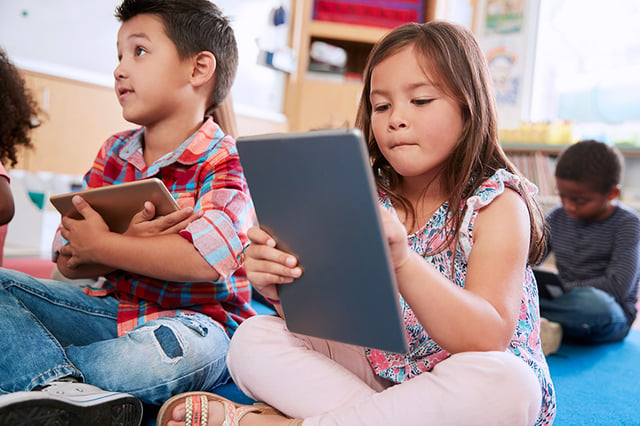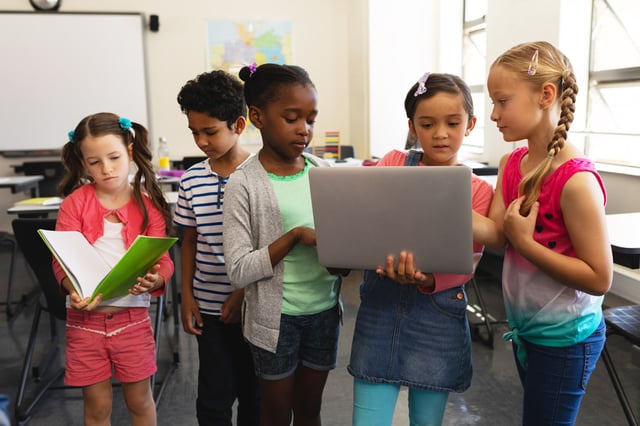The Digital Use Divide in Education, the Digital Equity Series
 Insights By Anna McVeigh-Murphy
Insights By Anna McVeigh-Murphy
As access is bridged and digital skills developed, the next divide is the digital use divide, which concerns the nature of technology integration in student learning.
The Potential of Technology Integration in Learning
Technology can be used in a lot of ways: students type a paper instead of writing it by hand, complete an online worksheet at home rather than in class, or find a relevant source for research using Google instead of an encyclopedia.
These activities, however, barely scratch the surface of technology’s potential in teaching and learning. Technology integration can go far beyond a simple substitution for a traditional assignment and become a force that redefines what, how, and where students learn. For example, instead of looking at current events online, students learn by speaking with experts or people with first-hand knowledge over Skype.
When used in this way, technology can create meaningful, personalized, and deep learning experiences. Some may even say its role in the classroom models the same disruptive innovation that’s occurred in the private sector. Okay, well, we said that actually, and you can read all about it here.
And because I want to spare myself the regurgitation and don’t want to risk spoiling the findings for you, here is a TL;DR version:
- Technology can disrupt current methods of teaching and learning.
- However, it is often not used to this capacity.
- Luckily, there are great strategies to enhance the depth of tech integration in the classroom, which we summarize.
To quote the research: “As we spoke with educators and poured through articles, we’ve come to realize the immense value in aiming for disruption and measuring the quality of tech integration through the disruptive behaviors it fosters: the ability for educators to reimagine instruction and redesign learning experiences through it.”
Technology Use in the Classroom
Technology integration often doesn’t rise to these higher levels of integration and is instead used in a passive capacity, rather than an active one.

The Digital Use Divide and Equity
Like the other divides, the digital use divide follows the lines of deeper digital inequities.
A study by Connected Learning Alliance found that students in higher-income schools experienced technology as a creative and playful medium while those from middle and lower-income schools used it at a far more basic level.
A second report also uncovered that lower-income, non-white children were more likely to use technology for drill and practice compared to their more affluent peers, who used technology in learning for problem solving and higher-order thinking.
To bridge this divide, the need for support cannot be overlooked; active, creative, and hands-on learning fueled by technology is essential for student success in a world in which they are expected to think with tech, create with tech, and lead with tech.
Activating Learning with Technology: Kristin Magyar and Highland Falls Fort Montgomery Central School District

Educator: Kristin Magyar
Position: Pre-K-Grade 6 STREAM Teacher, District Technology Leadership Team Member
District: Highland Falls Fort Montgomery Central School District
Location: Highland Falls, NY
To harness student enthusiasm, Kristin seeks to engage her students in hands-on projects that are relevant and connect to the real world. One such project was a toy invention unit with a final presentation that modeled Shark Tank and Toy Box TV. Throughout this project, students followed the design thinking process, collaborated with their peers, and practiced communication for presenting their work in a product pitch.
By actively learning with technology, students gained valuable experience using digital tools to create, iterate, and innovate.
“After prototyping, students created infographics for their marketing campaigns. The students developed ideas using more graphics and less words, which was hard for the students who wanted to talk and have lots to say about everything.” Kristin Magyar




